Before and after photos on vertical bone loss from gum disease in x-rays performed in our Gum Disease Treatment office.
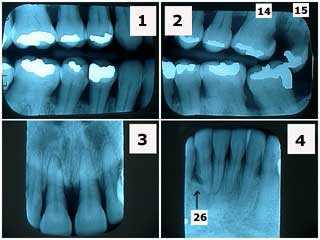
X-ray series showing severe gum periodontal disease in a 40-year-old. Note the significant horizontal bone loss and the lack of radiographic calculus. Tooth #26, adjacent to the vertical bony defect, is probably hopeless. This patient was treated with two rounds of root planing and scaling then periodontal reevaluation. Tooth #15 was extracted and #14 had root canal therapy and a crown. Maxilla or maxillary refers to the upper jaw while mandible or mandibular refers to the lower jaw.
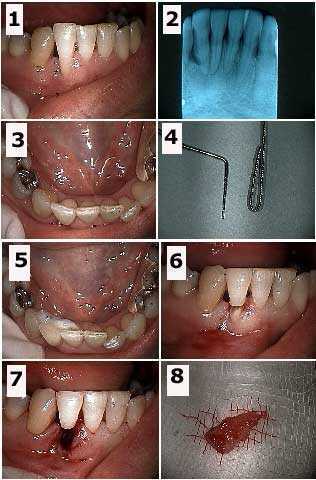
Extraction of the root of a hopeless tooth #26 in the lower jaw and splinting the coronal portion to the adjacent teeth in a 40 year-old female. 1) – 3) Initial pictures and x-ray. Note the vertical bone loss around #26. 4) The wire used for the splint next to a perio probe. The wire is doubled to prevent the tooth from rotating around it after placement. 5) The splint bonded to the lingual surfaces of teeth #’s 25 and 27. 6) Initial preparation through the mid-length of the tooth. 7) Following extraction of the tooth root. 8) The extracted tooth root. This patient has already been through two rounds of scaling and root planing. After healing of this extraction site she will then have apically positioned flap periodontal gum surgery and then possibly a gum graft to build up this area. It is expected that some other method for tooth replacement will be utilized following this periodontal therapy.
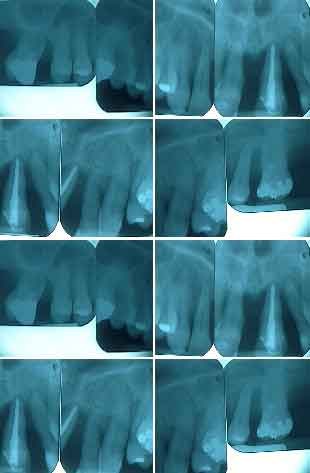
Vertical bone loss around upper front teeth. X-ray series of the maxilla, upper jaw.
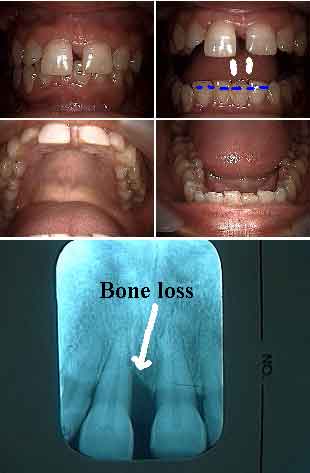
Occluso-periodontal (combined bite-gum) problems. The chief complaint was her front teeth are moving and she now has a space or gap in the maxillary jaw. Fremitus (movement of tooth #8) upon closing was noted. Notice the deep bite. Consider either lower anterior orthodontic intrusion – braces – or incisal adjustment. Next, periodontal scaling and then probably surgery in the upper anterior. Following gum healing consider either upper orthodontic movement to bring these teeth back or bonding with a palatal splint (after reducing #8 incisally). Pictures and x-ray.
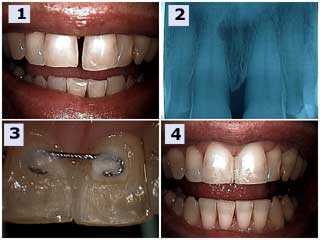
Treatment of a periodontally involved left central tooth in the maxillary jaw. 1) & 2) Pre-operative photograph and radiograph. Note the angular bony defect, vertical bone loss, in the x-ray. The patient reported that the tooth was getting longer and that he never previously had the space between his two front teeth. 3) Palatal photo of the splint placed between teeth #’s 8 & 9. 4) Post-operative view one hour later. Teeth bonding placed interproximally to close the gap also hides the palatal splint. The incisal edge of #9 was shortened and the occlusion – bite- was checked and adjusted for fremitus. Scaling & Root Planing was next performed and the patient placed on a three-month periodontal reevaluation.